For individuals undergoing dialysis, the access site is not just a medical necessity; it is a lifeline that ensures treatment efficacy and quality of life. Dialysis access serves as the site through which blood is drawn, cleaned, and returned to the body. Its type, maintenance, and functionality are vital in supporting patients’ long-term health and well-being.
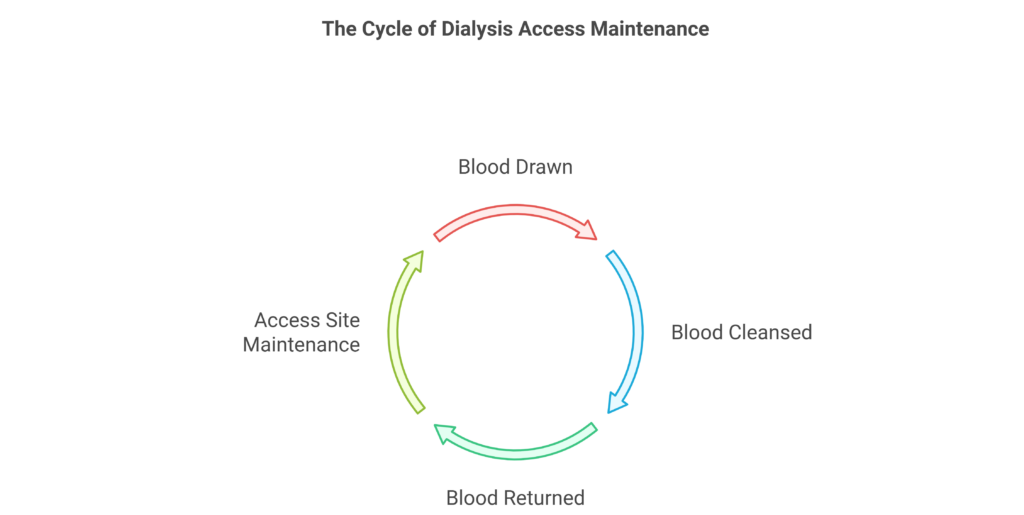
Types of Dialysis Access
For individuals undergoing dialysis, the access site is not just a medical necessity; it is a lifeline that ensures treatment efficacy and quality of life. Dialysis access serves as the site through which blood is drawn, cleaned, and returned to the body. Its type, maintenance, and functionality are vital in supporting patients’ long-term health and well-being.

Arteriovenous (AV) Fistula:
-
- Description: Created by surgically connecting an artery to a vein, usually in the arm. This process causes the vein to enlarge and strengthen over time, enabling it to handle repeated needle insertions.
- Duration: Long-term (years, sometimes decades) with proper care.
- Advantages: Lowest risk of infection, fewer complications, and longest lifespan among all access types.
- Drawbacks: Requires weeks or months to mature before use.
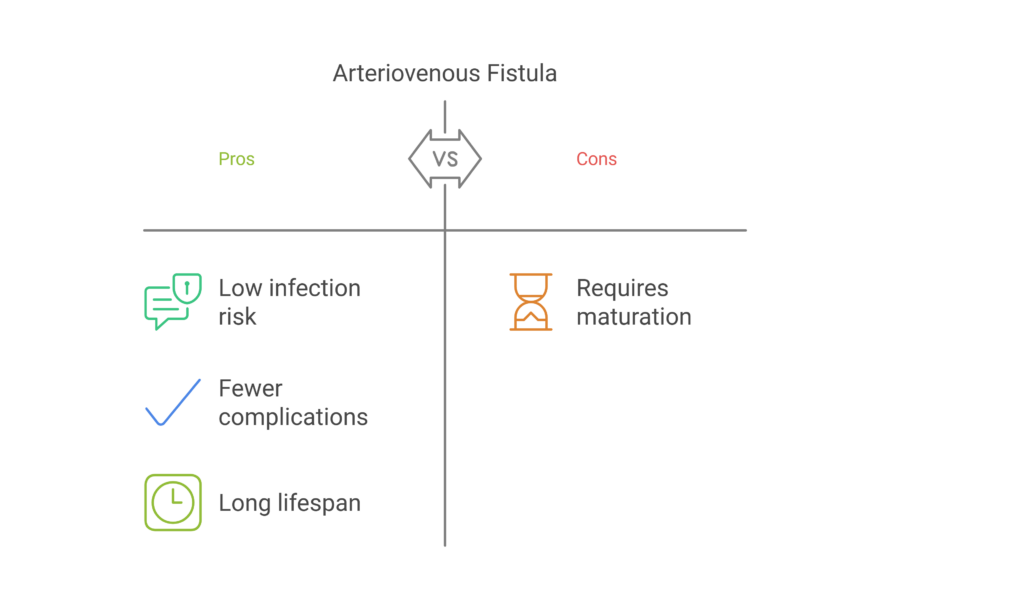
AV Graft
- Description: Involves using a synthetic tube to connect an artery to a vein, serving as a bridge for blood flow.
- Duration: Intermediate (months to years).
- Advantages: Suitable for patients with small or weak veins where fistulas are not feasible. Faster to use after creation (2-3 weeks).
- Drawbacks: Higher risk of clotting and infection compared to fistulas.
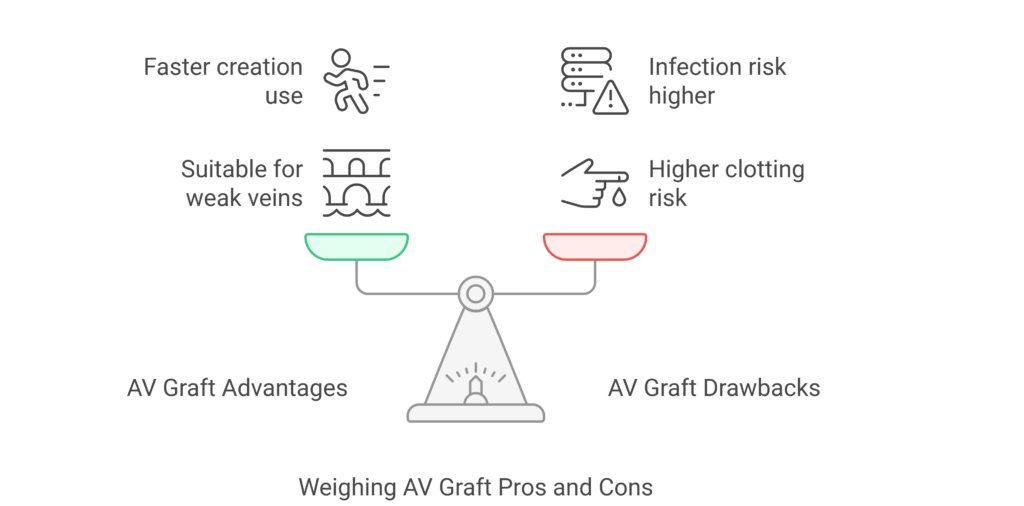
Central Venous Catheter (CVC):
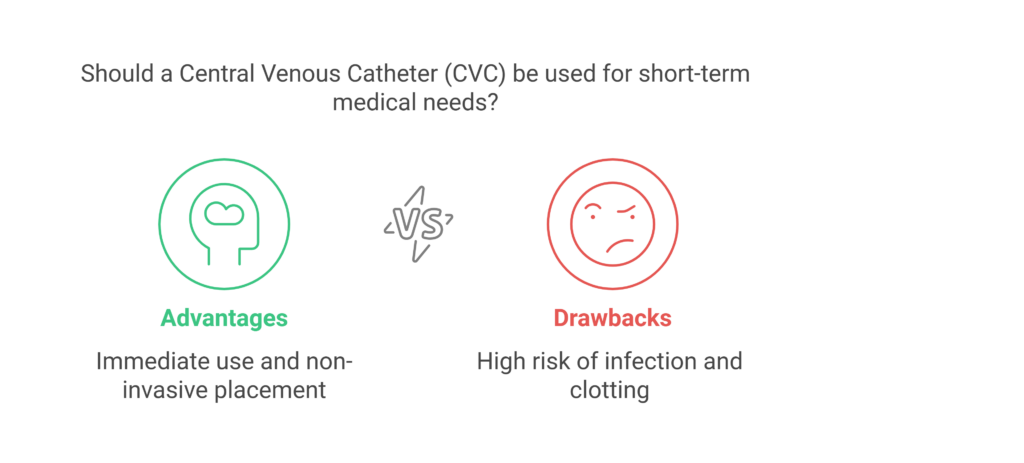
- Description: A temporary solution inserted into a large vein in the neck, chest, or groin.
- Duration: Short-term (weeks to months).
- Advantages: Immediately usable and non-invasive placement.
- Drawbacks: Highest risk of infection and clotting; not recommended for long-term use.
Comparing Dialysis Access Types
|
Feature |
AV Fistula |
AV Graft |
Central Venous Catheter (CVC) |
|
Purpose |
Long-term use |
Intermediate use |
Temporary use |
|
Time to Maturity |
Weeks to months |
2-3 weeks |
Immediate |
|
Longevity |
Years to decades |
Months to years |
Weeks to months |
|
Infection Risk |
Lowest |
Moderate |
Highest |
|
Complication Risk |
Minimal |
Higher |
Very high |
|
Placement |
Surgical connection of artery and vein |
Synthetic tube connection |
Catheter insertion into large vein |
|
Suitability |
Ideal for most patients with healthy veins |
For patients with unsuitable veins |
Emergency or temporary use |
Making Sense of Dialysis Access: What Patients Need to Know
Choosing the right dialysis access type can feel confusing, but understanding your options helps you take control of your health. Let’s break it down in simple terms.
If you’re planning for long-term dialysis, an AV fistula is often the best choice. It’s like an investment in your health. Yes, it takes time to develop (sometimes a few months), but once ready, it’s reliable and has the lowest risk of complications. Think of it as the “strongest and safest” option.
For people who can’t have a fistula due to weak veins, an AV graft is the next best thing. It’s quicker to use (about 2-3 weeks after placement), making it a practical choice for many. However, it may need more frequent maintenance to prevent issues like blockages.
A central venous catheter (CVC) is typically used in emergencies or when dialysis must start immediately. It’s easy to insert and ready to use right away, but it’s not ideal for long-term use because of the high risk of infection.
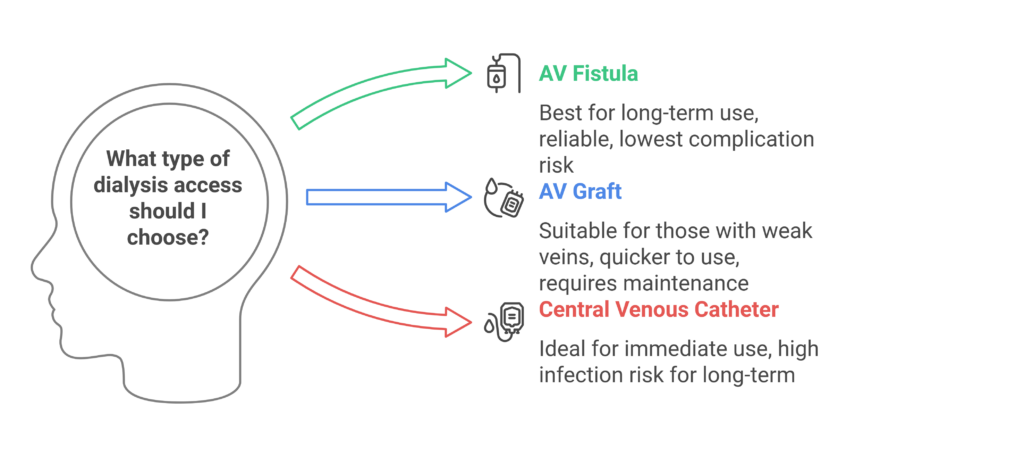
Taking Care of Your Access
No matter which type of access you have, taking good care of it is crucial. Here are some simple tips:
- Keep it clean: Always wash your hands before touching the site.
- Look for warning signs: Redness, swelling, or warmth around the area could mean infection. Inform your doctor immediately.
- Protect the area: Avoid wearing tight clothes or jewellery on the arm with the fistula or graft. Don’t lift heavy objects with that arm.
- Follow doctor’s advice: Regular check-ups can catch and fix problems early.
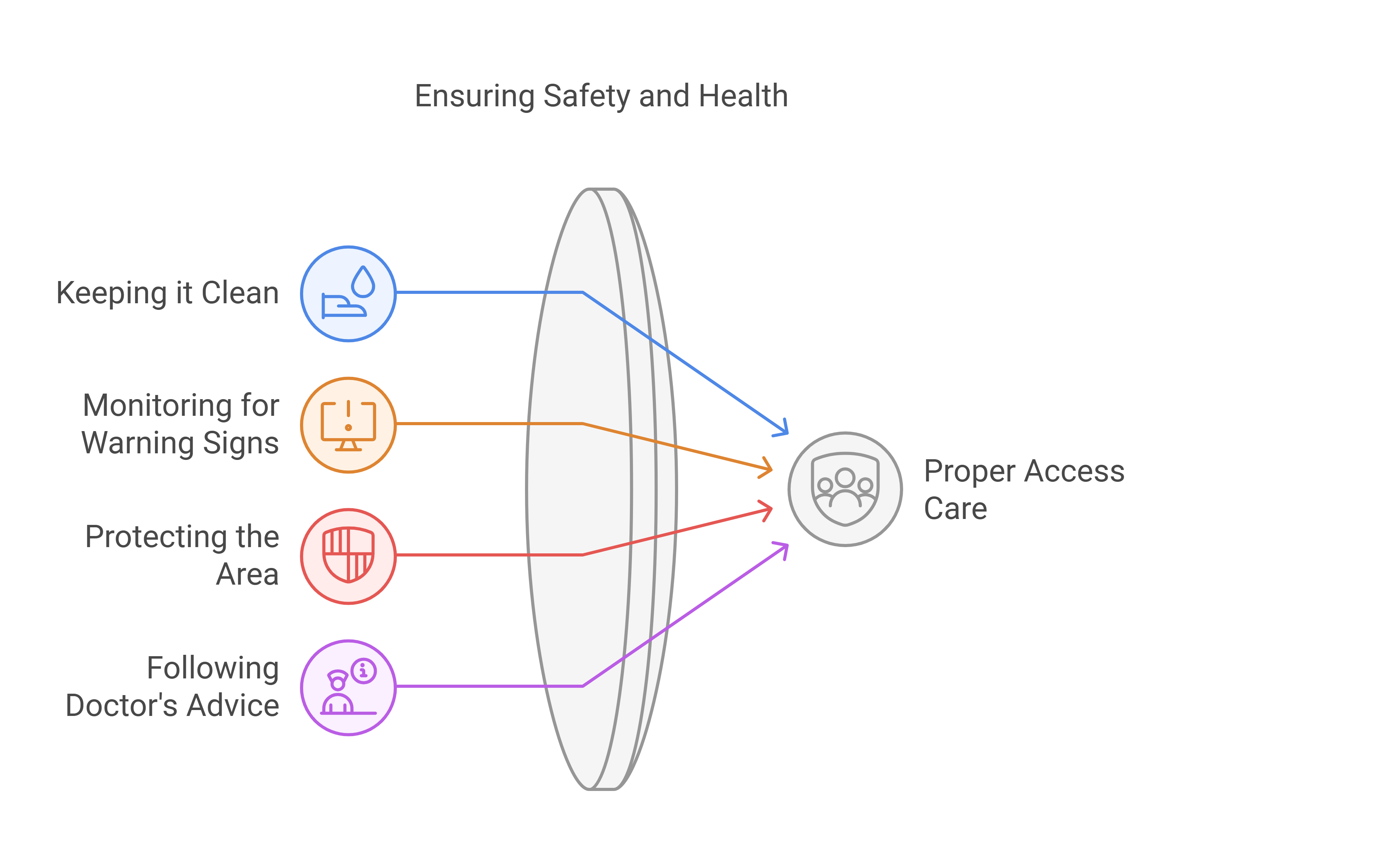
Empowering Patients
Being a dialysis patient is challenging, but knowledge is power. By understanding the types of access and how to care for them, you’re taking an important step toward better health. Remember, your healthcare team is there to guide you. Don’t hesitate to ask questions or share your concerns—you’re not alone on this journey.


